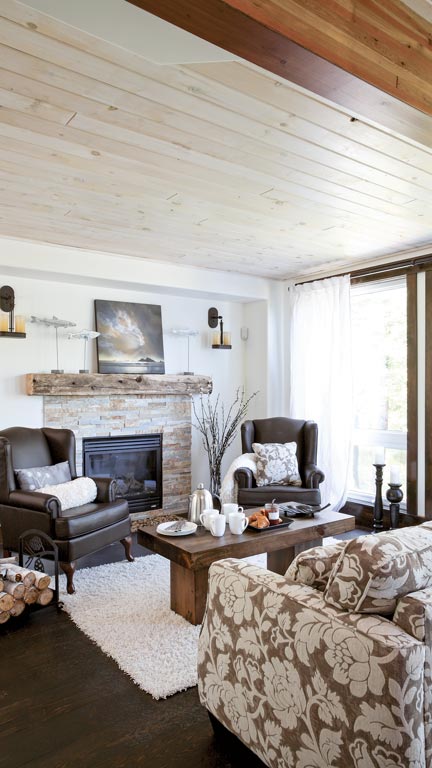
It’s no secret that just stepping foot inside a timber home makes you feel good — the grounded, organic feel, the exceptional craftsmanship of the frame and, of course, the views soaring up to the cathedral ceilings and out through the expanses of glass. Your body and soul exhale a collective “aaahhh” with each wood-scented breath. Fans of timber frame homes have long known that building isn’t just about erecting four walls and a roof for shelter. It’s about creating a haven for the people who live inside of those walls.
Now, the world at large is catching up with a new trend in sustainable design known as “wellness architecture.” An off-shoot of the green-building movement, this concept takes the next step in sustainable/healthy-home design.
“Wellness architecture goes beyond environmental and energy issues and focuses on how the built environment relates to the human experience,” explains Architect Ty Allen of New Energy Works, a timber-framing design/build firm with shops in New York and Oregon.
Michael Grant, an architect and the owner of Modern Rustic Homes in Ellijay, Georgia, agrees: “Wellness architecture ups the game on green building by allowing architecture to promote health and well-being at a higher level. It effectively took a global movement and made it very personal. It considers how the spaces we live in impact our quality of life.”
So, where green building stresses minimizing a structure’s carbon footprint — its impact on the natural world — wellness architecture lobbies for better indoor air quality, for example. This emphasis on healthier construction makes timber homes natural bedfellows with wellness architecture. In support of the movement, the Harvard T.H. Chan School of Public Health published a list of the “Nine Foundations of a Heathy Building,” which reads like a promo for a timber frame home with its focus on natural lighting and views, comfortable interior temperatures and biophilic design (bringing organic elements indoors to foster a human connection with nature).
As with the benefits of timber home design, the tenets of wellness architecture go beyond the physical. Within the movement, discussions of happiness and beauty are naturally at play, just as they are in the world of wood homes. “Timber-framed construction has a unique benefit, if you consider mental and emotional wellness. There is undeniably a connection we have with wood that creates de-stressing calmness,” explains Allen Halcomb, president of Tennessee-based design firm, MossCreek. He adds with a laugh: “This is why spas and wellness retreats feature structural and decorative wood components and Manhattan skyscrapers don’t.”

5 Ways to Design a Happy, Healthy Home
1. Choose your finishing options carefully.
Opt for “paint and stain finishes that have low VOCs, manmade countertop materials (think quartz or concrete) that are less porous and, therefore, less likely to cultivate bacteria and flooring products, such as bamboo, that are highly sustainable,” suggests Michael Grant.
2. Keep purpose in the forefront of your mind during design, especially when it comes to integral spaces like the kitchen.
“The kitchen has evolved to support healthier zones for food prep, cooking, baking, organization and eating. This also reinforces the social aspect of food as to how it accommodates interaction with family and friends,” says Michael.
3. Create a spa-like bathroom that can be a retreat for relaxation and renewal.
Include luxuries like a steam shower, a jetted spa tub or a wet room. These perceived “indulgences” actually foster a sense of mental well-being, which is essential to overall health.
4. Incorporate large expanses of glass, including sliding, pocket or folding doors, to allow your interior spaces to transition easily to the outside.
Other ideas include designing an interior atrium or an open-square design that looks out to a secret garden. Blurring the line between indoor and outdoor spaces is a key tenant of wellness architecture.
5. Be intentional about outdoor living areas.
This may be as simple as a firepit or as generous as an outdoor kitchen or sleeping porch. Each of these reinforce our desire to experience nature to its absolute fullest.
See also: Six Steps to a Healthy Timber Home





